On Learning Random Forests for Random Forest Clustering
Manuele Bicego,
Francisco Escolano

Auto-TLDR; Learning Random Forests for Clustering
Similar papers
Proximity Isolation Forests
Antonella Mensi, Manuele Bicego, David Tax

Auto-TLDR; Proximity Isolation Forests for Non-vectorial Data
Abstract Slides Poster Similar
A Novel Random Forest Dissimilarity Measure for Multi-View Learning
Hongliu Cao, Simon Bernard, Robert Sabourin, Laurent Heutte

Auto-TLDR; Multi-view Learning with Random Forest Relation Measure and Instance Hardness
Abstract Slides Poster Similar
Decision Snippet Features
Pascal Welke, Fouad Alkhoury, Christian Bauckhage, Stefan Wrobel

Auto-TLDR; Decision Snippet Features for Interpretability
Abstract Slides Poster Similar
Hierarchical Routing Mixture of Experts
Wenbo Zhao, Yang Gao, Shahan Ali Memon, Bhiksha Raj, Rita Singh

Auto-TLDR; A Binary Tree-structured Hierarchical Routing Mixture of Experts for Regression
Abstract Slides Poster Similar
PowerHC: Non Linear Normalization of Distances for Advanced Nearest Neighbor Classification
Manuele Bicego, Mauricio Orozco-Alzate
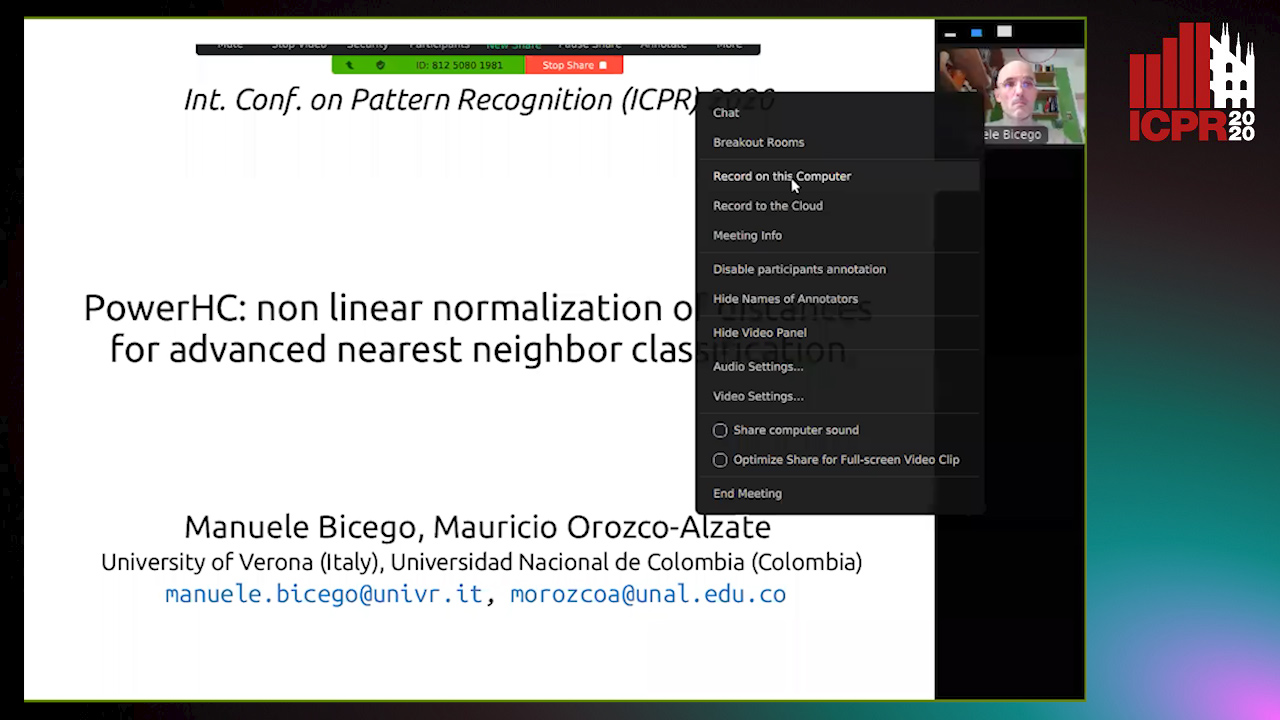
Auto-TLDR; Non linear scaling of distances for advanced nearest neighbor classification
Abstract Slides Poster Similar
PIF: Anomaly detection via preference embedding
Filippo Leveni, Luca Magri, Giacomo Boracchi, Cesare Alippi

Auto-TLDR; PIF: Anomaly Detection with Preference Embedding for Structured Patterns
Abstract Slides Poster Similar
Aggregating Dependent Gaussian Experts in Local Approximation

Auto-TLDR; A novel approach for aggregating the Gaussian experts by detecting strong violations of conditional independence
Abstract Slides Poster Similar
Detecting Rare Cell Populations in Flow Cytometry Data Using UMAP
Lisa Weijler, Markus Diem, Michael Reiter
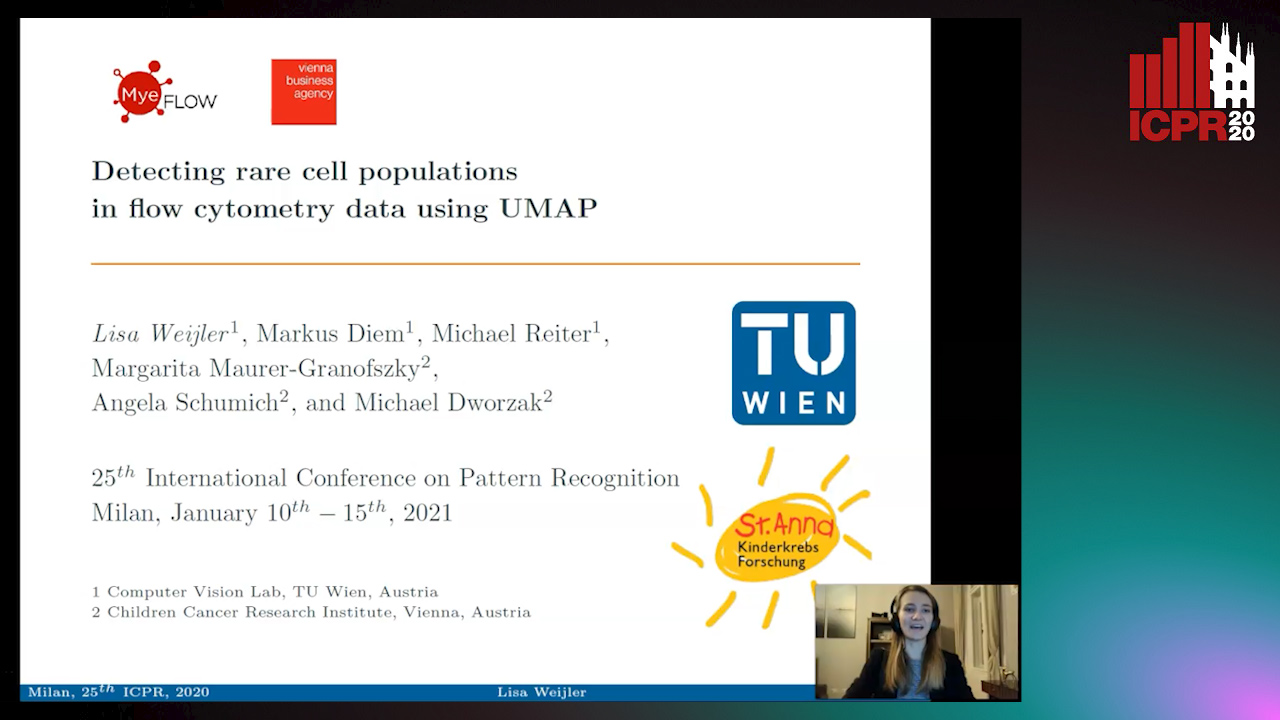
Auto-TLDR; Unsupervised Manifold Approximation and Projection for Small Cell Population Detection in Flow cytometry Data
Abstract Slides Poster Similar
Temporal Pattern Detection in Time-Varying Graphical Models
Federico Tomasi, Veronica Tozzo, Annalisa Barla

Auto-TLDR; A dynamical network inference model that leverages on kernels to consider general temporal patterns
Abstract Slides Poster Similar
Algorithm Recommendation for Data Streams
Jáder Martins Camboim De Sá, Andre Luis Debiaso Rossi, Gustavo Enrique De Almeida Prado Alves Batista, Luís Paulo Faina Garcia

Auto-TLDR; Meta-Learning for Algorithm Selection in Time-Changing Data Streams
Abstract Slides Poster Similar
Sketch-Based Community Detection Via Representative Node Sampling
Mahlagha Sedghi, Andre Beckus, George Atia

Auto-TLDR; Sketch-based Clustering of Community Detection Using a Small Sketch
Abstract Slides Poster Similar
A Heuristic-Based Decision Tree for Connected Components Labeling of 3D Volumes
Maximilian Söchting, Stefano Allegretti, Federico Bolelli, Costantino Grana

Auto-TLDR; Entropy Partitioning Decision Tree for Connected Components Labeling
Abstract Slides Poster Similar
An Invariance-Guided Stability Criterion for Time Series Clustering Validation
Florent Forest, Alex Mourer, Mustapha Lebbah, Hanane Azzag, Jérôme Lacaille

Auto-TLDR; An invariance-guided method for clustering model selection in time series data
Abstract Slides Poster Similar
Uniform and Non-Uniform Sampling Methods for Sub-Linear Time K-Means Clustering

Auto-TLDR; Sub-linear Time Clustering with Constant Approximation Ratio for K-Means Problem
Abstract Slides Poster Similar
The eXPose Approach to Crosslier Detection
Antonio Barata, Frank Takes, Hendrik Van Den Herik, Cor Veenman

Auto-TLDR; EXPose: Crosslier Detection Based on Supervised Category Modeling
Abstract Slides Poster Similar
Automatic Classification of Human Granulosa Cells in Assisted Reproductive Technology Using Vibrational Spectroscopy Imaging
Marina Paolanti, Emanuele Frontoni, Giorgia Gioacchini, Giorgini Elisabetta, Notarstefano Valentina, Zacà Carlotta, Carnevali Oliana, Andrea Borini, Marco Mameli

Auto-TLDR; Predicting Oocyte Quality in Assisted Reproductive Technology Using Machine Learning Techniques
Abstract Slides Poster Similar
Dual-Memory Model for Incremental Learning: The Handwriting Recognition Use Case
Mélanie Piot, Bérangère Bourdoulous, Aurelia Deshayes, Lionel Prevost

Auto-TLDR; A dual memory model for handwriting recognition
Enhancing Deep Semantic Segmentation of RGB-D Data with Entangled Forests
Matteo Terreran, Elia Bonetto, Stefano Ghidoni

Auto-TLDR; FuseNet: A Lighter Deep Learning Model for Semantic Segmentation
Abstract Slides Poster Similar
Learning Embeddings for Image Clustering: An Empirical Study of Triplet Loss Approaches
Kalun Ho, Janis Keuper, Franz-Josef Pfreundt, Margret Keuper

Auto-TLDR; Clustering Objectives for K-means and Correlation Clustering Using Triplet Loss
Abstract Slides Poster Similar
Categorizing the Feature Space for Two-Class Imbalance Learning
Rosa Sicilia, Ermanno Cordelli, Paolo Soda

Auto-TLDR; Efficient Ensemble of Classifiers for Minority Class Inference
Abstract Slides Poster Similar
An Empirical Bayes Approach to Topic Modeling
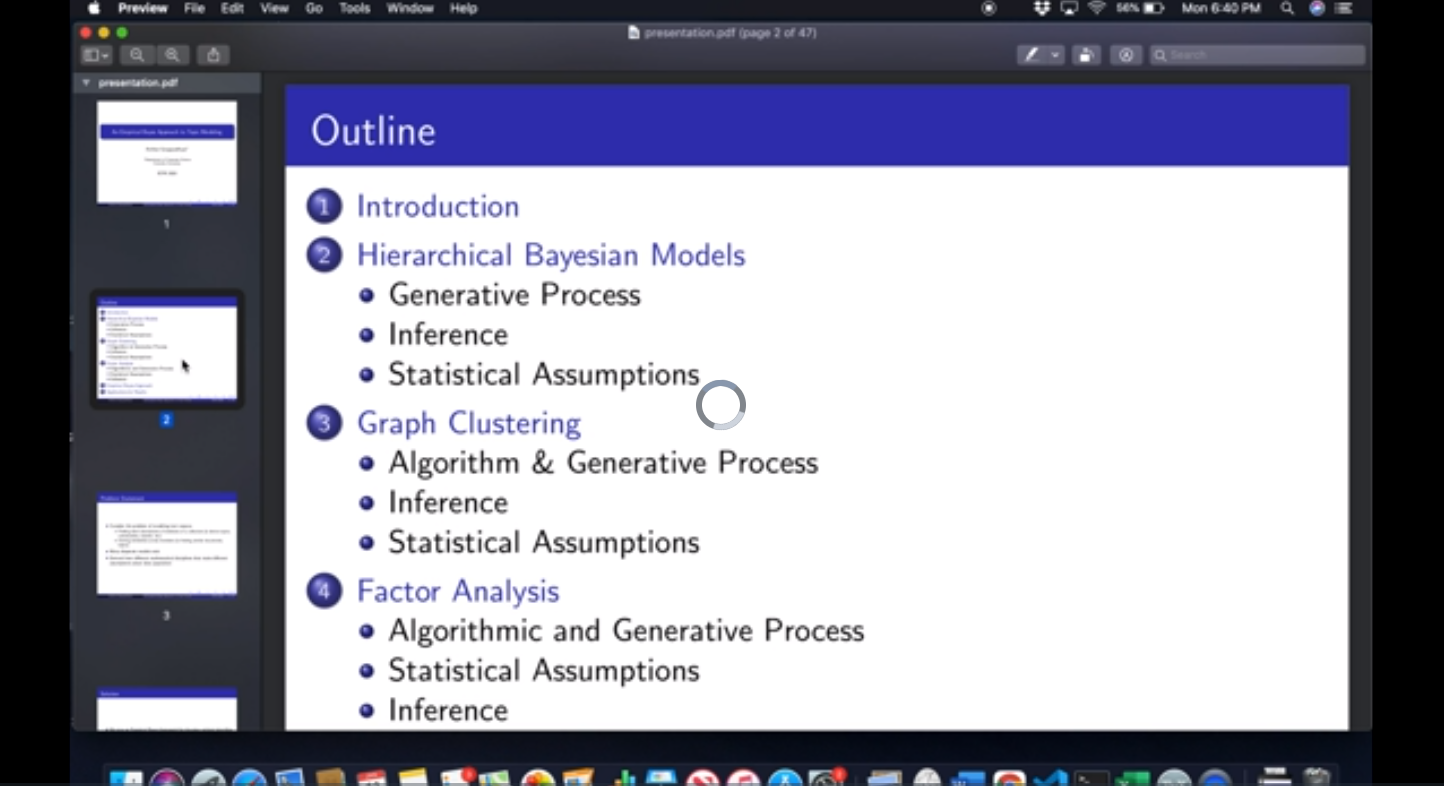
Auto-TLDR; An Empirical Bayes Based Framework for Topic Modeling in Documents
Deep Convolutional Embedding for Digitized Painting Clustering
Giovanna Castellano, Gennaro Vessio

Auto-TLDR; A Deep Convolutional Embedding Model for Clustering Artworks
Abstract Slides Poster Similar
Graph Spectral Feature Learning for Mixed Data of Categorical and Numerical Type
Saswata Sahoo, Souradip Chakraborty
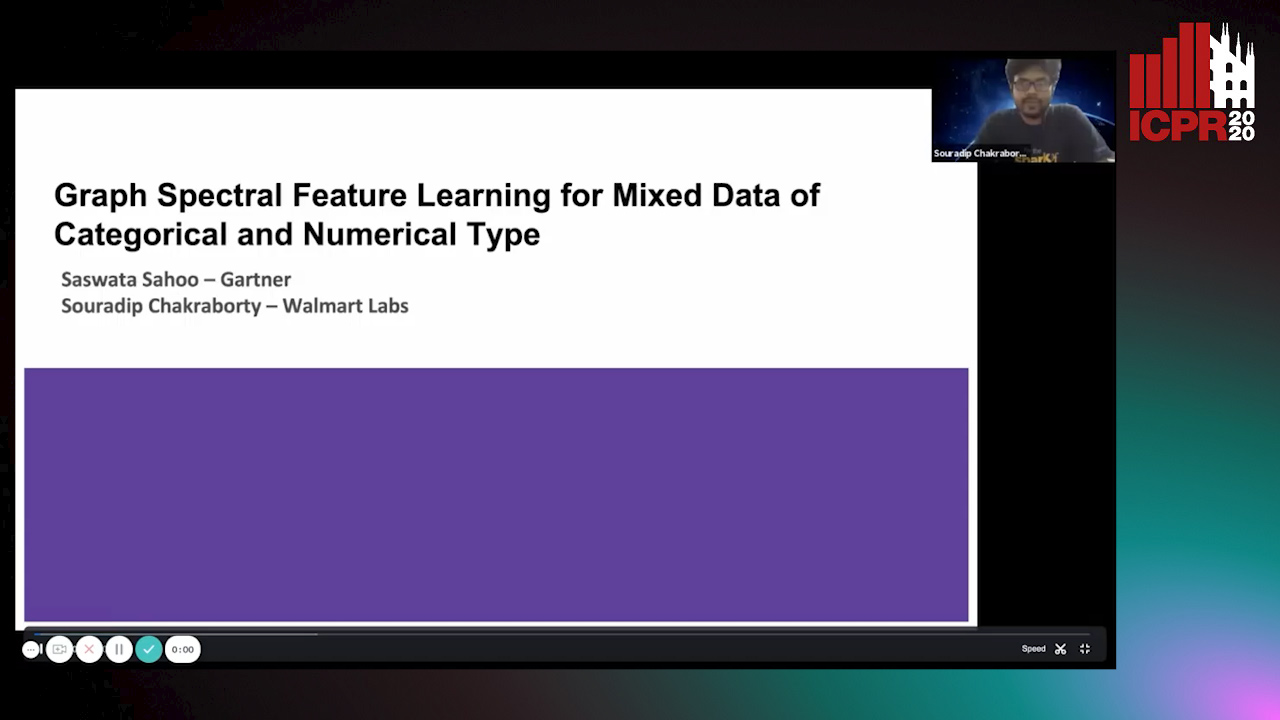
Auto-TLDR; Feature Learning in Mixed Type of Variable by an undirected graph
Abstract Slides Poster Similar
Factor Screening Using Bayesian Active Learning and Gaussian Process Meta-Modelling
Cheng Li, Santu Rana, Andrew William Gill, Dang Nguyen, Sunil Kumar Gupta, Svetha Venkatesh

Auto-TLDR; Data-Efficient Bayesian Active Learning for Factor Screening in Combat Simulations
GPSRL: Learning Semi-Parametric Bayesian Survival Rule Lists from Heterogeneous Patient Data
Ameer Hamza Shakur, Xiaoning Qian, Zhangyang Wang, Bobak Mortazavi, Shuai Huang

Auto-TLDR; Semi-parametric Bayesian Survival Rule List Model for Heterogeneous Survival Data
Watermelon: A Novel Feature Selection Method Based on Bayes Error Rate Estimation and a New Interpretation of Feature Relevance and Redundancy

Auto-TLDR; Feature Selection Using Bayes Error Rate Estimation for Dynamic Feature Selection
Abstract Slides Poster Similar
Scalable Direction-Search-Based Approach to Subspace Clustering

Auto-TLDR; Fast Direction-Search-Based Subspace Clustering
Relative Feature Importance
Gunnar König, Christoph Molnar, Bernd Bischl, Moritz Grosse-Wentrup

Auto-TLDR; Relative Feature Importance for Interpretable Machine Learning
Cluster-Size Constrained Network Partitioning
Maksim Mironov, Konstantin Avrachenkov
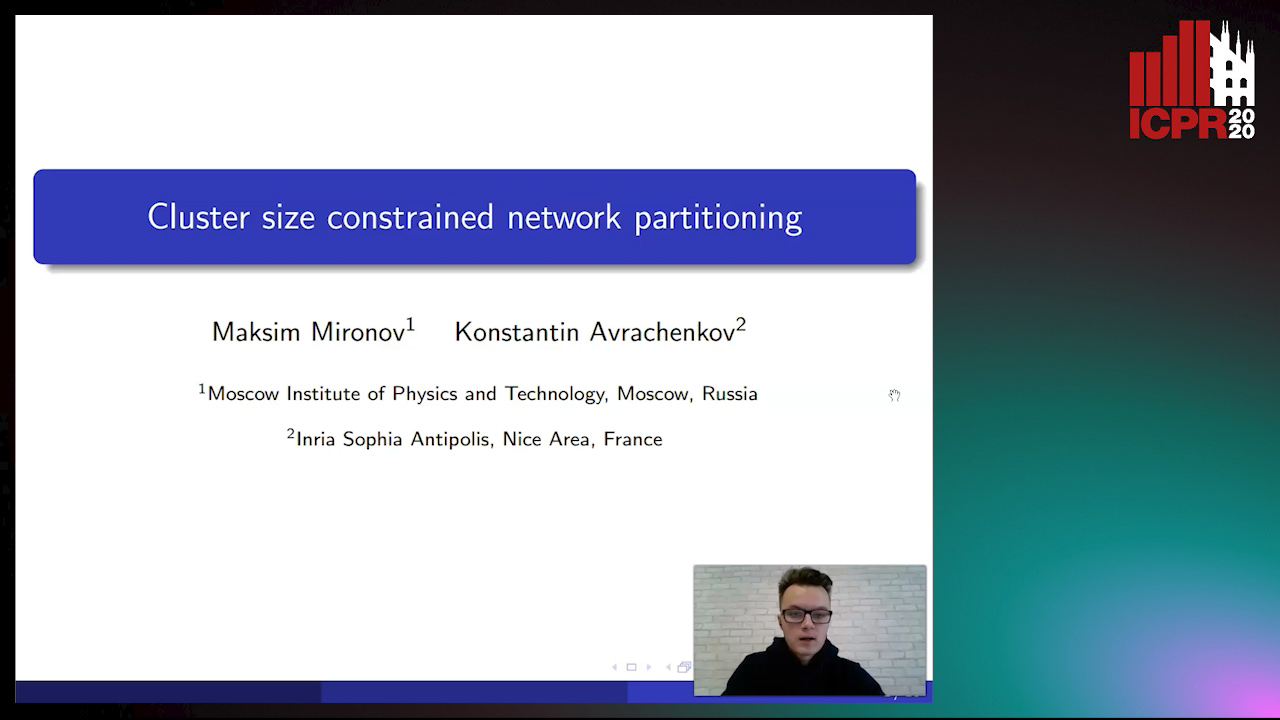
Auto-TLDR; Unsupervised Graph Clustering with Stochastic Block Model
Abstract Slides Poster Similar
How to Define a Rejection Class Based on Model Learning?
Sarah Laroui, Xavier Descombes, Aurelia Vernay, Florent Villiers, Francois Villalba, Eric Debreuve

Auto-TLDR; An innovative learning strategy for supervised classification that is able, by design, to reject a sample as not belonging to any of the known classes
Abstract Slides Poster Similar
Assortative-Constrained Stochastic Block Models
Daniel Gribel, Thibaut Vidal, Michel Gendreau
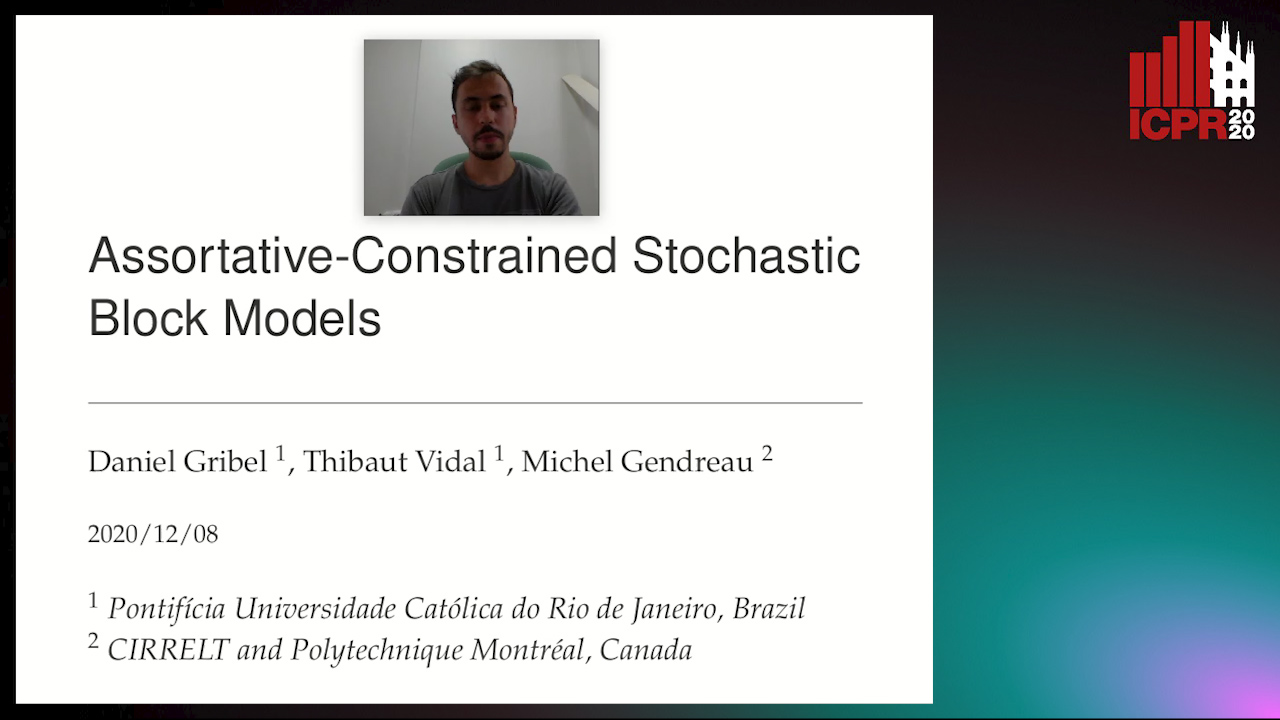
Auto-TLDR; Constrained Stochastic Block Models for Assortative Communities in Neural Networks
Abstract Slides Poster Similar
One Step Clustering Based on A-Contrario Framework for Detection of Alterations in Historical Violins
Alireza Rezaei, Sylvie Le Hégarat-Mascle, Emanuel Aldea, Piercarlo Dondi, Marco Malagodi

Auto-TLDR; A-Contrario Clustering for the Detection of Altered Violins using UVIFL Images
Abstract Slides Poster Similar
Comparison of Stacking-Based Classifier Ensembles Using Euclidean and Riemannian Geometries
Vitaliy Tayanov, Adam Krzyzak, Ching Y Suen
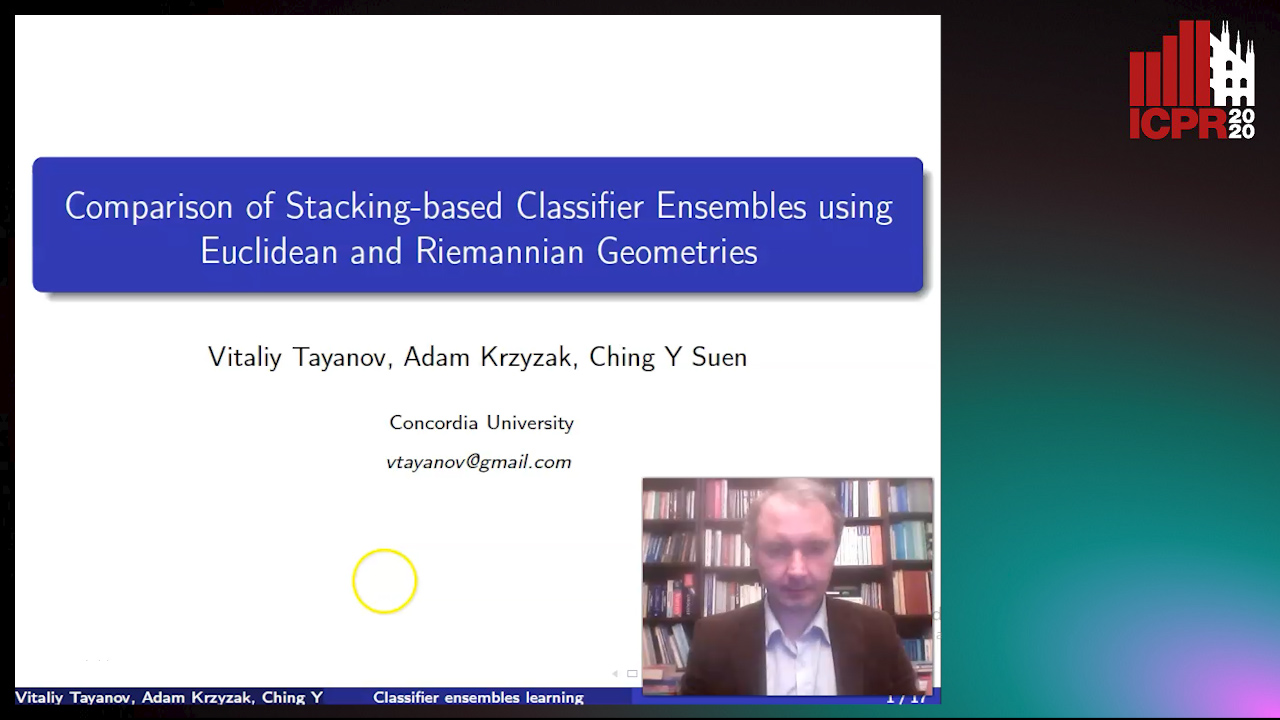
Auto-TLDR; Classifier Stacking in Riemannian Geometries using Cascades of Random Forest and Extra Trees
Abstract Slides Poster Similar
Bayesian Active Learning for Maximal Information Gain on Model Parameters
Kasra Arnavaz, Aasa Feragen, Oswin Krause, Marco Loog

Auto-TLDR; Bayesian assumptions for Bayesian classification
Abstract Slides Poster Similar
A Novel Adaptive Minority Oversampling Technique for Improved Classification in Data Imbalanced Scenarios
Ayush Tripathi, Rupayan Chakraborty, Sunil Kumar Kopparapu

Auto-TLDR; Synthetic Minority OverSampling Technique for Imbalanced Data
Abstract Slides Poster Similar
Encoding Brain Networks through Geodesic Clustering of Functional Connectivity for Multiple Sclerosis Classification
Muhammad Abubakar Yamin, Valsasina Paola, Michael Dayan, Sebastiano Vascon, Tessadori Jacopo, Filippi Massimo, Vittorio Murino, A Rocca Maria, Diego Sona
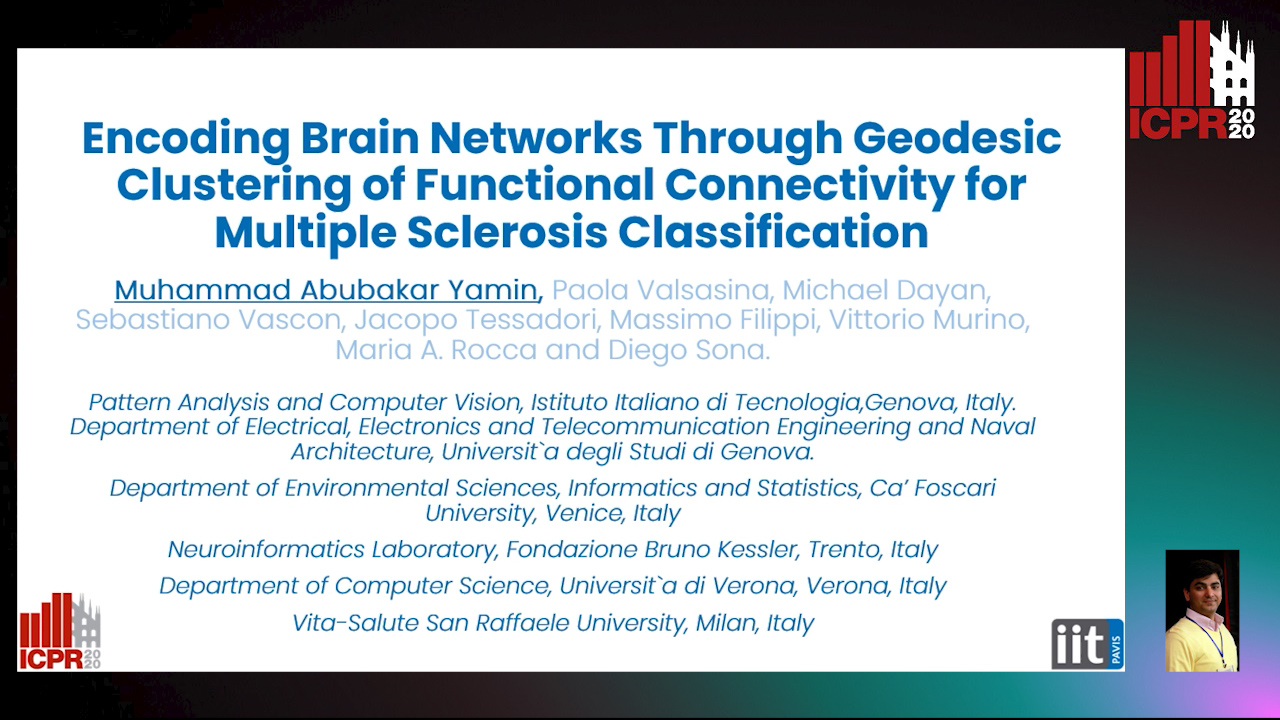
Auto-TLDR; Geodesic Clustering of Connectivity Matrices for Multiple Sclerosis Classification
Abstract Slides Poster Similar
Automatic Tuberculosis Detection Using Chest X-Ray Analysis with Position Enhanced Structural Information
Hermann Jepdjio Nkouanga, Szilard Vajda

Auto-TLDR; Automatic Chest X-ray Screening for Tuberculosis in Rural Population using Localized Region on Interest
Abstract Slides Poster Similar
Using Meta Labels for the Training of Weighting Models in a Sample-Specific Late Fusion Classification Architecture
Peter Bellmann, Patrick Thiam, Friedhelm Schwenker

Auto-TLDR; A Late Fusion Architecture for Multiple Classifier Systems
Abstract Slides Poster Similar
A Cheaper Rectified-Nearest-Feature-Line-Segment Classifier Based on Safe Points
Mauricio Orozco-Alzate, Manuele Bicego
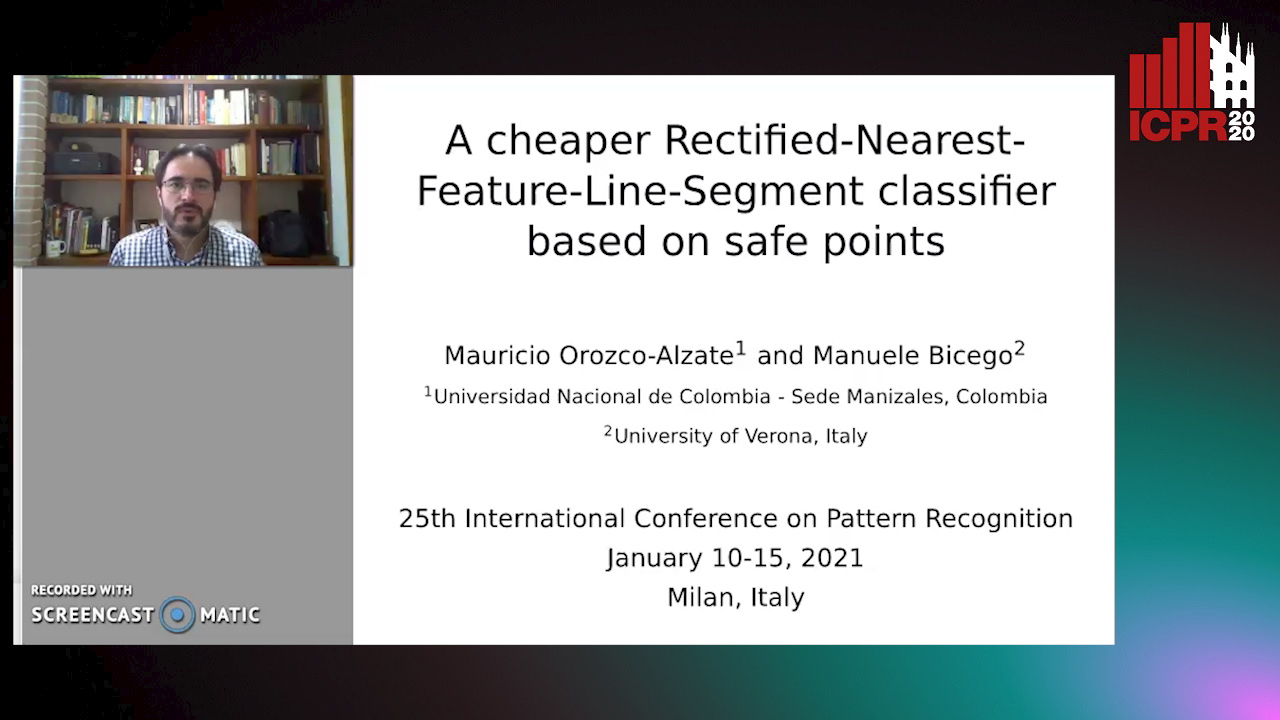
Auto-TLDR; Rectified Nearest Feature Line Segment Segment Classifier
Abstract Slides Poster Similar
Motion Segmentation with Pairwise Matches and Unknown Number of Motions
Federica Arrigoni, Tomas Pajdla, Luca Magri

Auto-TLDR; Motion Segmentation using Multi-Modelfitting andpermutation synchronization
Abstract Slides Poster Similar
N2D: (Not Too) Deep Clustering Via Clustering the Local Manifold of an Autoencoded Embedding
Ryan Mcconville, Raul Santos-Rodriguez, Robert Piechocki, Ian Craddock

Auto-TLDR; Local Manifold Learning for Deep Clustering on Autoencoded Embeddings
Supervised Classification Using Graph-Based Space Partitioning for Multiclass Problems
Nicola Yanev, Ventzeslav Valev, Adam Krzyzak, Karima Ben Suliman
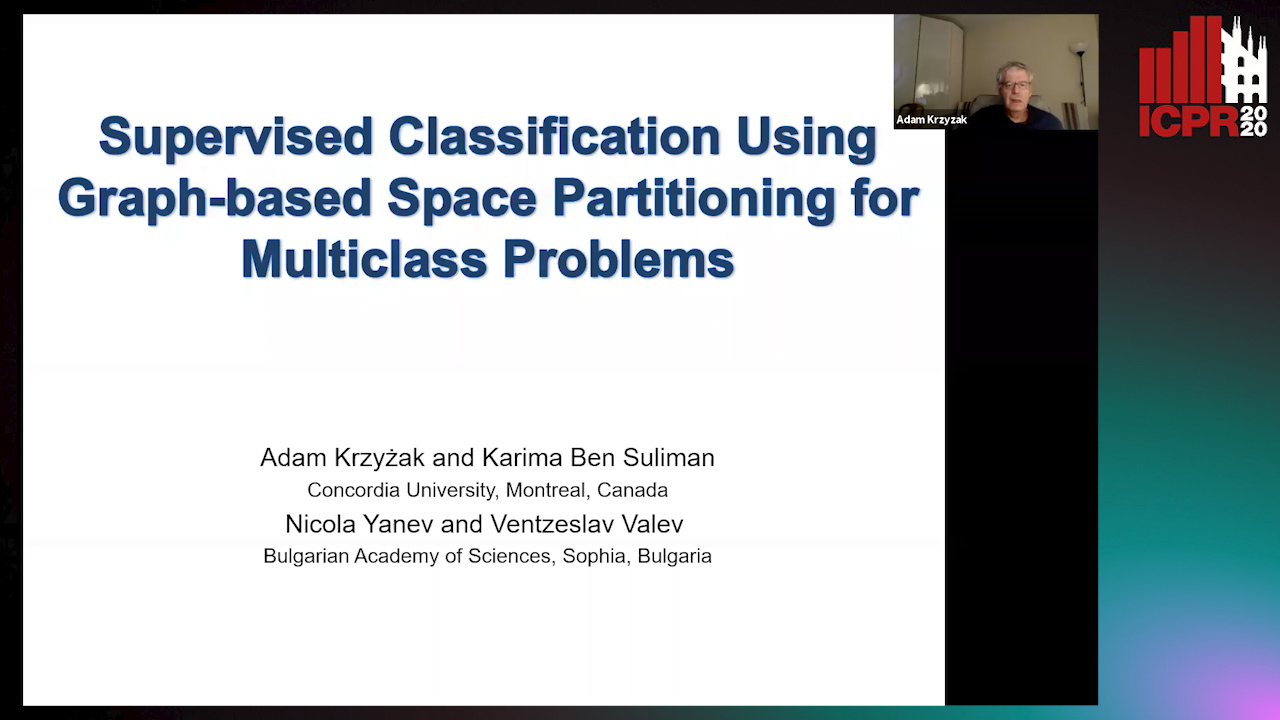
Auto-TLDR; Box Classifier for Multiclass Classification
Abstract Slides Poster Similar
On Morphological Hierarchies for Image Sequences
Caglayan Tuna, Alain Giros, François Merciol, Sébastien Lefèvre

Auto-TLDR; Comparison of Hierarchies for Image Sequences
Abstract Slides Poster Similar
Position-Aware Safe Boundary Interpolation Oversampling

Auto-TLDR; PABIO: Position-Aware Safe Boundary Interpolation-Based Oversampling for Imbalanced Data
Abstract Slides Poster Similar
Deep Transfer Learning for Alzheimer’s Disease Detection
Nicole Cilia, Claudio De Stefano, Francesco Fontanella, Claudio Marrocco, Mario Molinara, Alessandra Scotto Di Freca

Auto-TLDR; Automatic Detection of Handwriting Alterations for Alzheimer's Disease Diagnosis using Dynamic Features
Abstract Slides Poster Similar
Sparse-Dense Subspace Clustering
Shuai Yang, Wenqi Zhu, Yuesheng Zhu
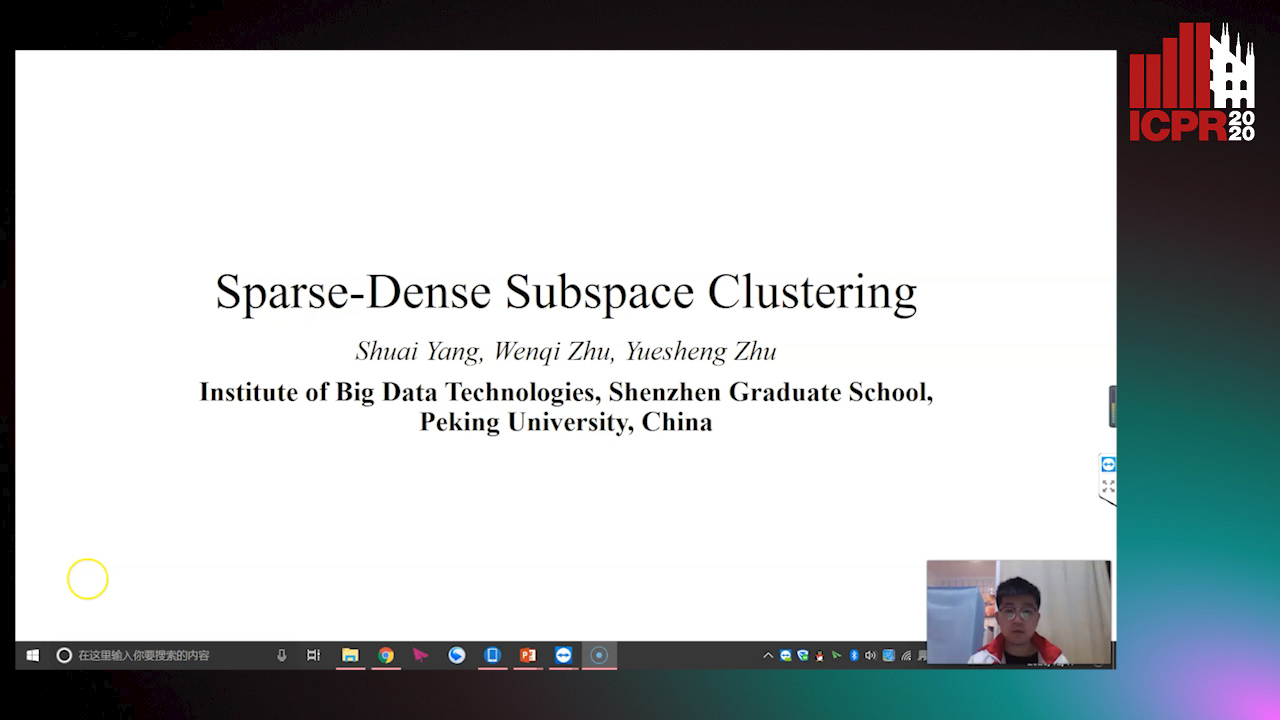
Auto-TLDR; Sparse-Dense Subspace Clustering with Piecewise Correlation Estimation
Abstract Slides Poster Similar
Constrained Spectral Clustering Network with Self-Training
Xinyue Liu, Shichong Yang, Linlin Zong

Auto-TLDR; Constrained Spectral Clustering Network: A Constrained Deep spectral clustering network
Abstract Slides Poster Similar
Weakly Supervised Learning through Rank-Based Contextual Measures
João Gabriel Camacho Presotto, Lucas Pascotti Valem, Nikolas Gomes De Sá, Daniel Carlos Guimaraes Pedronette, Joao Paulo Papa

Auto-TLDR; Exploiting Unlabeled Data for Weakly Supervised Classification of Multimedia Data
Abstract Slides Poster Similar